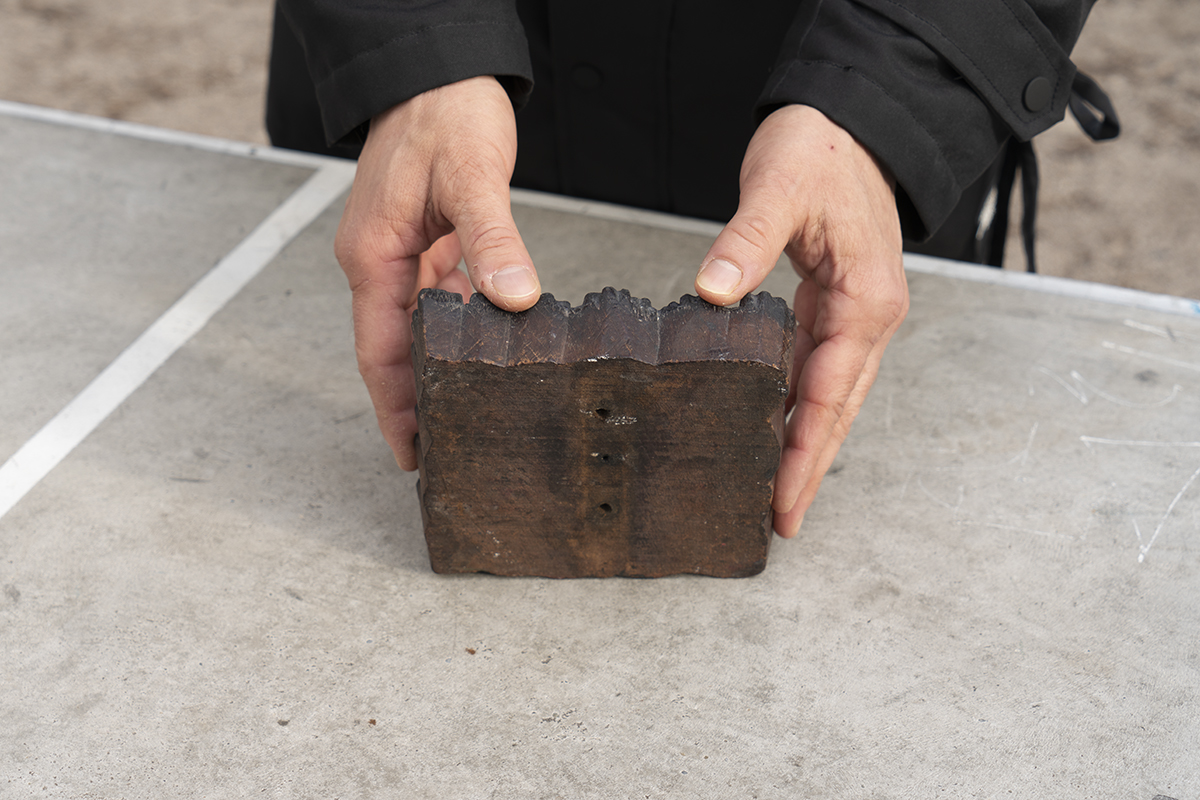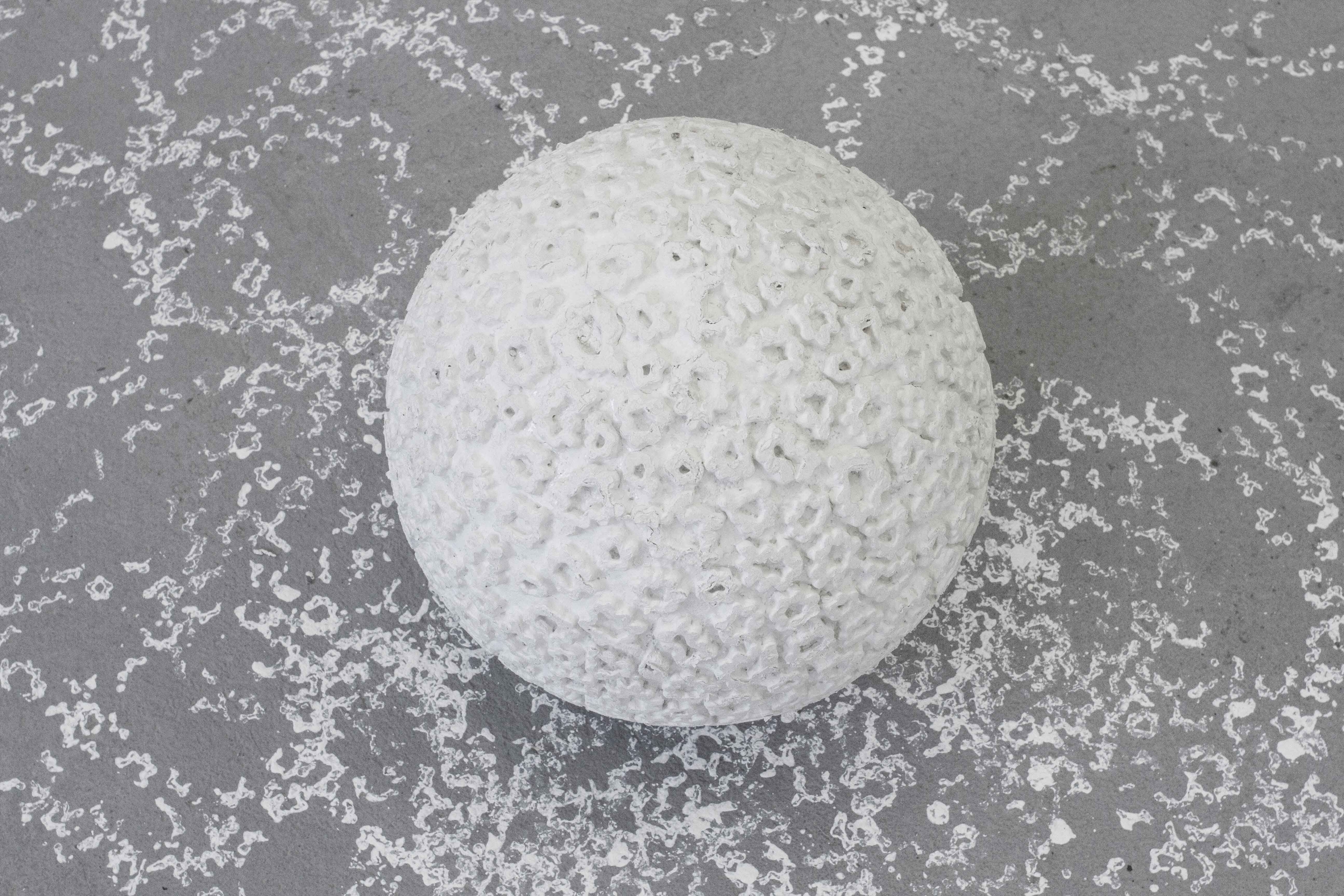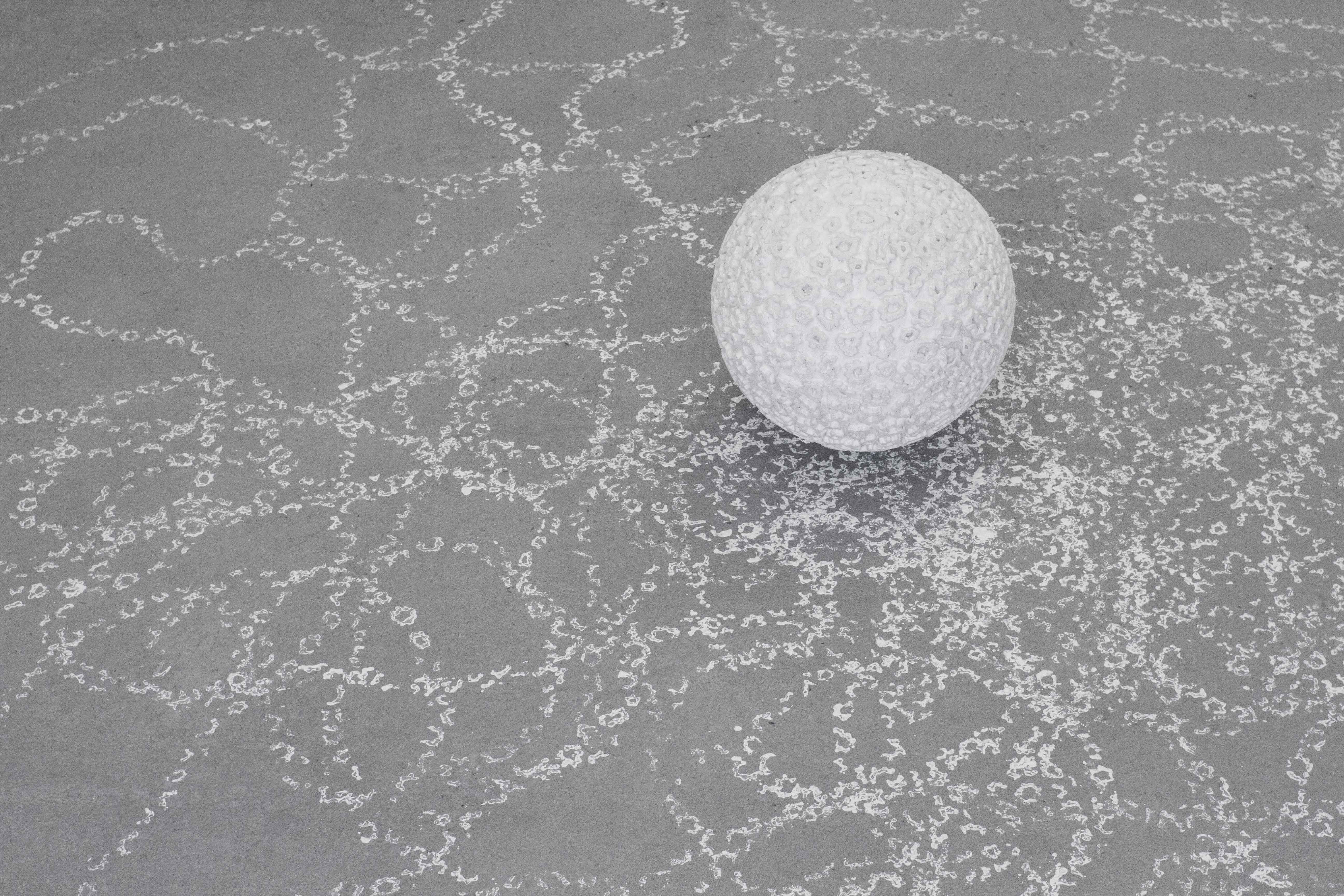Close Things / MATEJ GAVULA
The first object in the new series Close Things comes from far away - Matej Gavula brought it all the way from India, and it continues to fascinate him even after many years.

Photo: Katarína Poliačiková.

Photo: Katarína Poliačiková.
What is the story of this strange object that you have chosen?
It was a long time ago, in 2004, when I got to New Delhi for a residency at an institution called KHOJ. We worked in the studios there for about two months, and in between we would go on various trips to the surrounding areas on weekends. One weekend we went to Rajasthan, to Jaipur, where we spent a lot of time in the markets. There you can get hold of absolutely everything imaginable. There were a lot of craft supplies for textile printing, and there were a huge number of those ornaments. And I was intrigued by this one in particular, which varies the circle motif into different forms, none of which are repeated. It reminded me of an experimental score where each character plays out in a completely different way. And that’s what’s interesting to me about ornament as such, which is used a lot in craft – that in that simplicity and in the repetition, you achieve a state of such a subtle trance. I can’t identify the wood that the stamp is made of, but it’s definitely local. It’s all handmade, there was obviously some sort of handle attached to the back, which is no longer there. So that’s one of my souvenirs that I brought back from there.
It is thus a stamp or a mould for printing canvas.
Yes, and indigo was obviously used, you can still see the pigment residue in it. So even that distinctive indigo colour, which I love, connects with our crafts, like blueprinting. There, it was confirmed to me that there are certain universal tendencies that go across cultures. I love the object, it’s a square that’s all pulsating. It has that vibration in it.
There’s really something very alive in that pattern, even though it’s a static object, when I look at it I feel like there’s something going on. You also used this object in your recent exhibition at HotDock Gallery[1], right?
Yes, I made a cast of it, and I ended up multiplying the rings, and gluing them onto the sphere. By doing that, I achieved a different constellation of the pattern than the original square, so that the pattern described the surface of the sphere. From there I then pushed the ornament onto the gallery floor, creating a kind of cluster of those patterns. As the sphere rolled – I painted it white – it left an imprint. And I exhibited this artefact alongside it, I acknowledged that connection. I just gave it a different form – spherical.

Cryptofrequency, photo: Leontína Berková.

Cryptofrequency, photo: Leontína Berková.
At the beginning of the meeting you told me that before our conversation you had several objects to choose from to talk about. Why did the Indian stamp win out in the end? What is its unique value to you?
What do you think its charisma lies in… It’s definitely the rings. At first glance, the minimalist approach of the craftsman, but on closer inspection, each segment is different, unique. It required the craftsman who made it to vary that line. And the form is so timeless that you can’t even identify what period it belongs to – whether it’s a few hundred years old or from the 1950s. It has a universality about it. And I also like the way it’s worked on the side, the rough carving that’s reminiscent of African carvings.
And especially the fact that it was used in manufacturing, that it carries a memory trace as well.
We can imagine that the fabrics that imprinted this stamp still exist somewhere, that someone is still wearing them.
Yes, they are still there somewhere…